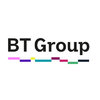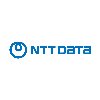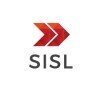Network Engineer
900+ Network Engineer Interview Questions and Answers

Asked in Movate

Q. TCP/IP layers, why is transport needed for communication? What is Subnet mask and how does it help in data communication. Why is Vlan needed? Based on what information does a switch and router send a packet or...
read moreQuestions related to TCP/IP layers, subnet mask, VLAN, ARP, port number, IP and MAC addresses.
Transport layer is needed for reliable communication and error correction.
Subnet mask is used to identify the network and host portions of an IP address.
VLAN is needed for network segmentation and security.
Switches and routers send packets or frames based on destination IP address.
Types of ARP include ARP request and ARP reply.
Port number is used to identify the application or servic...read more

Asked in Bharti Airtel

Q. Study MPLS deeply: 1. What is MPLS ? 2. Purpose of MPLS ? 3. What is LDP and its working ? 4. CEF ? 5. MP-BGP 6. MPLS-VPN 7. VRF/RT/RD ? 8. Types and uses of labels ? 9. MPLS Traffic flow ? 10. MPLS header ? 11...
read moreMPLS is a protocol used to efficiently route network traffic by assigning labels to packets.
MPLS stands for Multiprotocol Label Switching
It is used to improve network performance and reduce congestion
LDP (Label Distribution Protocol) is used to distribute labels to network devices
CEF (Cisco Express Forwarding) is a fast switching technology used in MPLS networks
MP-BGP (Multiprotocol Border Gateway Protocol) is used to exchange routing information between different autonomous ...read more
Network Engineer Interview Questions and Answers for Freshers

Asked in Tata Communications

Q. What is BGP? What is spilit horizon rule? How you configure BGP route reflector? Tell BGP path selection algorithm? ebgp multihop concept? OSPF LSA types and descriptions? How to redistribute OSPF into BGP? Wha...
read moreBGP is a routing protocol used to exchange routing information between different autonomous systems. It uses path vector algorithm.
Split horizon rule prevents a router from advertising a route back to the same interface from which it was learned.
BGP route reflector is configured by defining a cluster ID and selecting reflector clients.
BGP path selection algorithm selects the best path based on attributes like AS path length, origin code, MED, etc.
EBGP multihop concept is used...read more

Asked in Wipro

Q. What is Stp and how it is work? What is root bridge
STP (Spanning Tree Protocol) is a network protocol that prevents loops in Ethernet networks. It elects a root bridge to manage the network.
STP is a network protocol used to prevent loops in Ethernet networks.
It works by creating a loop-free logical topology by blocking redundant paths.
STP elects a root bridge, which becomes the central point of the network.
The root bridge is the bridge with the lowest bridge ID.
STP uses Bridge Protocol Data Units (BPDUs) to exchange informati...read more

Asked in BT Group

Q. What is tenant and types? What will happen if we use same subnet in more than one bridge domain of single vrf?
Explanation of tenant and types, and the consequences of using the same subnet in multiple bridge domains of a single VRF.
A tenant is a logical entity that groups together a set of networking resources and policies.
Types of tenants include common tenant, application tenant, and infrastructure tenant.
Using the same subnet in multiple bridge domains of a single VRF can cause IP address conflicts and communication issues.
This is because each bridge domain is a separate broadcast...read more

Asked in TCS

Q. When two or more computers or communicating devices are in a room, on a floor in a building or in a campus, if connected is said to be connected on a LAN.
LAN stands for Local Area Network, which connects two or more devices in a limited area.
LAN is a type of network that connects devices within a limited area such as a room, floor, or building.
It allows devices to communicate with each other and share resources such as printers and files.
LAN can be wired or wireless, and can be set up using Ethernet cables or Wi-Fi.
Examples of LAN include home networks, office networks, and school networks.
Network Engineer Jobs




Asked in Infosys

Q. If neither the port range in source NAT pools nor the default port range are configured, the default single port range is 1024 through 63,487.
Default single port range when neither port range in source NAT pools nor default port range are configured.
When neither port range in source NAT pools nor default port range are configured, the default single port range is 1024 through 63,487.
This range is used for outbound traffic initiated by the device.
It is important to configure the port range to avoid conflicts with other devices on the network.
For example, if multiple devices are using the same default port range, it ...read more

Asked in Capgemini

Q. 6. What is a MAC address? How is it different from an IP address? 7. What is a VLAN, and why is it used? 8. Explain the OSI model and its seven layers. 9. What is the difference between TCP and UDP? 10. What ar...
read moreMAC addresses uniquely identify devices on a network, while IP addresses locate devices within a network.
MAC Address: A Media Access Control address is a hardware identifier assigned to network interfaces for communications on the physical network segment.
IP Address: An Internet Protocol address is a numerical label assigned to each device connected to a computer network that uses the Internet Protocol for communication.
Layering: MAC addresses operate at Layer 2 (Data Link La...read more
Share interview questions and help millions of jobseekers 🌟


Asked in Locuz Enterprise Solutions

Q. Define BGP and OSPF states in depth. Explain how to check the summary of each, what the output signifies, and how to troubleshoot related issues. What are the message types?
BGP and OSPF states are crucial for understanding routing protocols and troubleshooting network issues.
BGP States: Idle, Connect, Active, OpenSent, OpenConfirm, Established. Each state indicates the progress of a BGP session.
OSPF States: Down, Init, Two-Way, ExStart, Exchange, Loading, Full. These states show the OSPF neighbor relationship process.
To check BGP states: Use 'show ip bgp summary' command. It displays the status of BGP peers and their states.
To check OSPF states:...read more

Asked in Velocis Systems

Q. What are STP, EIGRP dual algorithm, Static Routing, Administrative Value of different protocols, OSPF, TCP header, OSI layers, Different commands for ios upgradation and password recovery etc.
The question covers various networking concepts and protocols such as STP, EIGRP, OSPF, TCP header, and IOS commands.
STP (Spanning Tree Protocol) is used to prevent loops in a network.
EIGRP (Enhanced Interior Gateway Routing Protocol) dual algorithm is a routing protocol used in Cisco networks.
Static Routing is a type of routing where the network administrator manually configures the routes.
Administrative Value is a numerical value assigned to different routing protocols to d...read more

Asked in Movate

Q. How would you manage a ticket?
A ticket can be managed by following a systematic approach.
Acknowledge the ticket and assign it to the appropriate team member
Set a priority level based on the severity of the issue
Communicate with the customer and provide regular updates
Resolve the issue and close the ticket
Document the entire process for future reference

Asked in Ericsson

Q. 1-What is GSM Module? 2- Explain the architecture of Gsm module ? 3- What is type of signal ? 4- explain ADC and DAC? 5- what is python language? 6- what is oops concepts? 6- relocate question 7- minor and Majo...
read moreAnswers to questions related to Network Engineer job interview
GSM module is a hardware device that enables communication between mobile devices and cellular networks
The architecture of GSM module consists of a SIM card, a microcontroller, a power supply, and a radio transceiver
GSM module uses digital signal
ADC stands for Analog to Digital Converter and DAC stands for Digital to Analog Converter
Python is a high-level programming language used for web development, data analysis...read more

Asked in Infosys

Q. What is NAT, and what port numbers can be used?
NAT is a technique used to map private IP addresses to public IP addresses. Port numbers are used to identify specific applications.
NAT stands for Network Address Translation
It is used to allow devices with private IP addresses to access the internet using a public IP address
Port numbers are used to identify specific applications or services
Common port numbers include 80 for HTTP, 443 for HTTPS, and 22 for SSH

Asked in Wipro

Q. What are the ranges of private IP addresses?
Private IP addresses ranges are reserved for internal networks and not routable on the internet.
Private IP addresses are used within a local network and are not accessible from the internet
There are three ranges of private IP addresses: 10.0.0.0 - 10.255.255.255, 172.16.0.0 - 172.31.255.255, and 192.168.0.0 - 192.168.255.255
Private IP addresses are commonly used in home and office networks to allow devices to communicate with each other

Asked in BT Group

Q. What is vtep, vxlan, why and where vxlan is used in ACI?
VTEP is a virtual tunnel endpoint and VXLAN is a network overlay technology used for scaling out virtualized data centers.
VTEP is used to encapsulate and de-encapsulate VXLAN packets.
VXLAN is used to extend Layer 2 segments over a Layer 3 network.
VXLAN is used in ACI to provide a scalable and flexible network fabric for multi-tenant environments.
VXLAN allows for up to 16 million unique network segments.
VXLAN uses a 24-bit segment ID to identify the virtual network.
VXLAN packe...read more

Asked in CBTS TECHNOLOGY SOLUTIONS INDIA LLP

Q. What exactly do you mean by a route reflector in the context of Border Gateway Protocol? Why is it necessary?
A route reflector in BGP is a device that helps reduce the number of BGP peerings required in a network by reflecting routes to other routers.
Route reflectors help reduce the number of BGP peerings required in a network by allowing a router to reflect routes to other routers without the need for a full mesh of peerings.
They are necessary in large networks with many routers to reduce the complexity and resource usage of maintaining full mesh peerings.
Route reflectors help prev...read more

Asked in BT Group

Q. Explain Leaf and Spine architecture and why fabric mode is used between these two.
Leaf and Spine architecture is used in data center networks for scalability and redundancy. Fabric mode is used for efficient communication between them.
Leaf and Spine architecture is a two-tier network design where leaf switches connect to spine switches.
Leaf switches are connected to servers and storage devices while spine switches connect to other switches.
This architecture provides high bandwidth, low latency, and redundancy.
Fabric mode is used to create a single logical ...read more

Asked in BT Group

Q. What is ACI and what are the features of ACI?
ACI stands for Application Centric Infrastructure. It is a software-defined networking solution by Cisco.
ACI provides centralized automation and policy-driven application profiles.
It enables network administrators to manage the entire infrastructure as a single entity.
ACI supports multi-tenancy, security, and integration with third-party tools.
It uses a declarative model to define application requirements and automatically configures the network accordingly.
ACI includes a har...read more

Asked in Bharti Airtel

Q. What are multiplexers and demultiplexers?
Multiplexer is a device that combines multiple signals into one signal. Demultiplexer is a device that separates one signal into multiple signals.
Multiplexer is also known as MUX.
It is used to increase the capacity of a communication channel.
Demultiplexer is also known as DEMUX.
It is used to route a single input signal to multiple output signals.
Multiplexer and demultiplexer are commonly used in digital communication systems.
Example: A 4:1 MUX can combine four input signals i...read more

Asked in DXC Technology

Q. Where would you use a trunk link, and where would you use an access link?
Trunk is used to carry multiple VLANs between switches, while access is used to connect end devices to the network.
Trunk is used to connect switches together and carry multiple VLANs
Access is used to connect end devices like computers, printers, etc. to the network
Trunk ports are configured with VLAN tagging, while access ports are not
Examples of trunk ports are inter-switch links, while examples of access ports are ports connected to end devices

Asked in BT Group

Q. What is VDC? How many vdc can be created in Chassis having one supervisor?
VDC is Virtual Device Context. One supervisor can create up to 4 VDCs.
VDC allows multiple virtual switches to be created on a single physical switch
Each VDC has its own set of interfaces, VLANs, routing tables, and management interfaces
VDCs provide better resource utilization and isolation between different network services

Asked in Movate

Q. What is the IP phone boot-up process?
The IP phone boot up process involves several steps to initialize the device and connect to the network.
The phone powers on and performs a self-test
It obtains an IP address from the DHCP server
It downloads the firmware and configuration files from the TFTP server
It registers with the call manager or PBX
It is ready to make and receive calls

Asked in IBM

Q. What information should you expect to see when using the 'show interface type/member/module/number' command?
The show interface command displays the status and statistics of a network interface.
Displays the interface type, member, module, and number
Shows the current status of the interface (up or down)
Displays the number of packets transmitted and received
Shows the number of errors and discards
Displays the speed and duplex settings of the interface
Asked in Truecom Networks

Q. What is TCP/IP model What is STP and Types ? What is routing and switching ? What do understand by OSPF ? Can you tell me on which layer Router and switches work ? What is the AD value of RIP & EIGRP? Tell me a...
read moreQuestions related to networking concepts and technologies.
TCP/IP model is a conceptual model used to describe the communication protocols used on the internet.
STP (Spanning Tree Protocol) is used to prevent loops in a network by blocking redundant paths.
Routing is the process of finding the best path for data to travel from one network to another, while switching is the process of forwarding data within a network.
OSPF (Open Shortest Path First) is a routing protocol used to d...read more

Asked in NTT DATA, Inc.

Q. How to identify the cost of ospf ? What are the bgp attributes? How stp works
Identifying OSPF cost, BGP attributes, and STP working
OSPF cost is calculated based on the bandwidth of the link
BGP attributes include AS path, next hop, local preference, etc.
STP works by selecting a root bridge and blocking redundant paths
OSPF cost can be manually configured using the 'ip ospf cost' command
BGP attributes are used to determine the best path for routing
STP uses BPDU messages to exchange information and build a loop-free topology

Asked in Etisalat

Q. What is an NSSA area in OSPF, and why is it used?
NSSA area is a type of OSPF area that allows external routes to be injected into the OSPF domain.
NSSA stands for Not-So-Stubby-Area.
It is used when an area needs to import external routes but still wants to maintain some level of stubbiness.
NSSA area has an ABR (Area Border Router) that translates Type 7 LSAs (Link State Advertisements) into Type 5 LSAs.
Type 7 LSAs are generated by ASBR (Autonomous System Boundary Router) in the NSSA area.
NSSA area can be used in scenarios wh...read more


Q. What is BGP and what are its attributes?
BGP is a routing protocol used to exchange routing information between different networks.
BGP stands for Border Gateway Protocol.
It is used to connect different autonomous systems (AS) on the internet.
BGP uses path vector routing to determine the best path for data to travel.
BGP attributes include AS path, next hop, local preference, and origin.
AS path is a list of AS numbers that the route has passed through.
Next hop is the IP address of the next router in the path.
Local pre...read more

Asked in IBM

Q. What is the administrative distance value of BGP, and what are the BGP states?
BGP (Border Gateway Protocol) is a routing protocol used in internet networks. It provides scalability, redundancy, and policy control.
BGP is used to exchange routing information between different autonomous systems (AS)
It allows for efficient routing decisions based on policies and network conditions
BGP states represent the different stages of establishing and maintaining BGP peering sessions
Examples of BGP states include Idle, Connect, Active, OpenSent, OpenConfirm, Establi...read more

Asked in Quess IT Staffing Solutions

Q. What is the difference between a Cisco 920 series and a Cisco 903 series router?
Cisco 920 series routers are designed for small to medium-sized businesses, while Cisco 903 series routers are designed for enterprise-level networks.
Cisco 920 series routers are more cost-effective for smaller businesses with fewer network requirements.
Cisco 903 series routers offer higher performance and scalability for larger, more complex networks.
Cisco 920 series routers may have fewer ports and features compared to Cisco 903 series routers.
Cisco 903 series routers are t...read more

Asked in SISL Infotech

Q. Router configuration, switch configuration, types off switch, what's the decives you use in your previous project?
I have experience in configuring routers and switches, including different types of switches. In my previous project, I used devices such as Cisco routers and switches.
Configured routers and switches in previous projects
Familiar with different types of switches
Used devices like Cisco routers and switches
Interview Questions of Similar Designations
Interview Experiences of Popular Companies





Top Interview Questions for Network Engineer Related Skills

Calculate your in-hand salary
Confused about how your in-hand salary is calculated? Enter your annual salary (CTC) and get your in-hand salary


Reviews
Interviews
Salaries
Users










